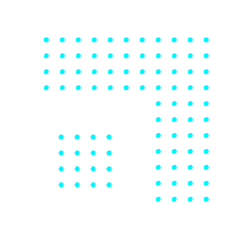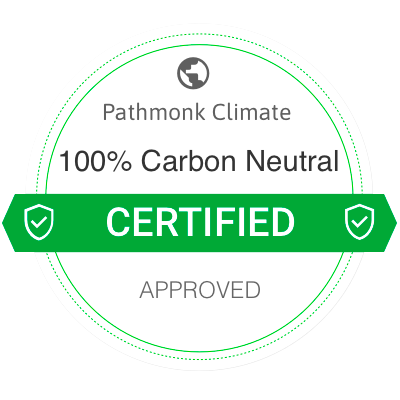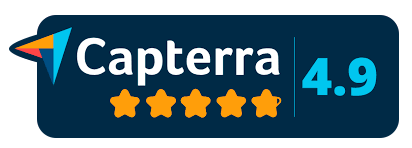Digital marketing has entered a new era, one where personalization isn’t a “nice to have.” It’s the expectation. According to McKinsey, 71% of consumers expect companies to deliver personalized interactions, and 76% get frustrated when this doesn’t happen. And it’s not just B2C anymore. Personalization is rapidly reshaping the B2B landscape too, where buyer journeys are long, fragmented, and full of drop-off points.
For marketing agencies, this shift is both a massive opportunity and a pressing challenge.
Clients no longer want vanity metrics, like traffic or social media followers, they want visible, revenue-driving outcomes. And agencies that can deliver personalized buying journeys will be the ones that not only survive but grow.
But here’s the rub: most personalization tools out there weren’t designed for agencies. They’re complex, slow to show results, and require dev-heavy integrations. That’s why the next agency pitch that lands you clients, renewals, and referrals isn’t “we’ll redesign your site” or “we’ll fix your funnel”.
It’s: “We’ll personalize your entire buyer journey, and that will increase your revenue.”
Table of Contents
The site sucks. The client won’t change it. Now what?
“I really hate my website, but I can’t change it because that would mean getting the developers involved—and that’ll take months.”
That’s what one of our marketing agency partners recently heard from their client. And it sums up the situation so many marketing agencies find themselves in. Clients are under pressure to drive more revenue from digital, but the moment the conversation shifts to the website—the core of the buying journey—it all grinds to a halt.
Because here’s the uncomfortable truth: most websites were not built for conversions. They were built as digital brochures. Static, one-size-fits-all, rigid. And even when clients do realize they need to adapt their site, the process is so development-heavy, so slow, so expensive, that it’s easier to leave it broken than try to fix it.
Meanwhile, they’ve hired you to deliver results.
And so you’re handed a clunky site and told to “get more conversions.” You might try some CRO tweaks, add a chatbot, maybe run a couple of A/B tests. But the real bottleneck remains untouched: the experience itself doesn’t match each visitor’s intent.
This is where personalization changes the game. It gives agencies a way to bypass the bottlenecks, without needing to redesign anything. You don’t have to wait for devs. You don’t have to fight for buy-in. You don’t need more traffic to prove value. You can just start adapting the experience right now, based on real user behavior, in real time.
With the right personalization layer, you’re not trying to re-engineer the site, you’re just making it smarter. That means:
- Showing different messages based on visitor intent
- Prioritizing different CTAs depending on the stage of the funnel
- Guiding users based on their behavior, industry, or traffic source
In a world where clients want quick wins without touching the backend, personalization is no longer a bonus, it’s the only lever that lets you increase performance without asking for permission.
Most personalization tools promise this. Few actually deliver it.
It’s easy to nod along with everything above. Yes—tailored experiences based on behavior. Yes—intent-based CTAs. Yes—fast, measurable, scalable results.
But if you’ve ever tried to implement personalization using traditional tools, you already know the dirty little secret: most tools weren’t built for speed, simplicity, or agencies.
They were built for large in-house marketing teams with dev support, data teams, and long sales cycles. Which means that while they say they’ll help you deliver personalized experiences, what they actually deliver is a mountain of work, a steep learning curve, and delays that kill momentum.
Let’s unpack that a bit.
1. CDPs like Segment or Bloomreach
These tools are powerful on paper. They give you access to data pipelines, behavioral triggers, and centralized customer profiles. But they come with a hefty setup cost, both in time and resources. You’ll often need:
- Engineers to implement events and structure the data layer
- Analysts to interpret the data and configure segments
- Weeks (or months) before you can launch even a basic experience
That’s great if you’re an enterprise with internal teams dedicated to marketing ops. But for agencies juggling multiple clients with lean budgets and even leaner tech stacks, it’s a non-starter.
2. A/B testing tools like Optimizely, Google Optimize (RIP), or Convert
They’re CRO staples. And yes, they allow you to run experiments and test what works. But here’s the thing:
- You need enough traffic to reach statistical significance
- You need developers to implement variations
- You need time to interpret results and act on them
Most agency clients don’t have that kind of traffic, or patience. You’re expected to deliver uplift in weeks, not run a six-week test that might show a 2% lift on a page no one visits. And when your A/B test doesn’t conclude fast enough? You’re the one justifying the budget.
3. CRO suites with personalization add-ons (like VWO or Dynamic Yield)
These platforms offer great features… if you can figure them out. You get personalization modules, heatmaps, user session recordings, and split testing, but the complexity is overwhelming. And while they technically offer personalization, it’s buried under layers of configuration, rules, dev dependencies, and unclear documentation.
Onboarding each client becomes a project in itself. And when you’re managing 3, 5, or 15 different accounts, that simply doesn’t scale.
Here’s the bottom line:
Most personalization tools were built to look impressive on Gartner reports, not to help an agency prove ROI in 10 days.
They’re designed for:
✅Internal marketing departments
✅Full-stack dev teams
✅Long-term experimentation
They’re not designed for:
❌Fast-paced agency work
❌Sites that can’t be changed
❌Clients who expect results, not excuses
What your marketing agency needs is a personalization layer that doesn’t break your flow. One that:
- Works across all your clients with minimal effort
- Doesn’t require developer involvement
- Delivers measurable impact quickly
- And—most importantly—actually helps you sell, retain, and upsell clients with confidence
That’s the gap in the market. And that’s where Pathmonk comes in.
Boost your clients' performance and keep them longer
Achieve higher returns for your customers with AI- personalized customer journeys.
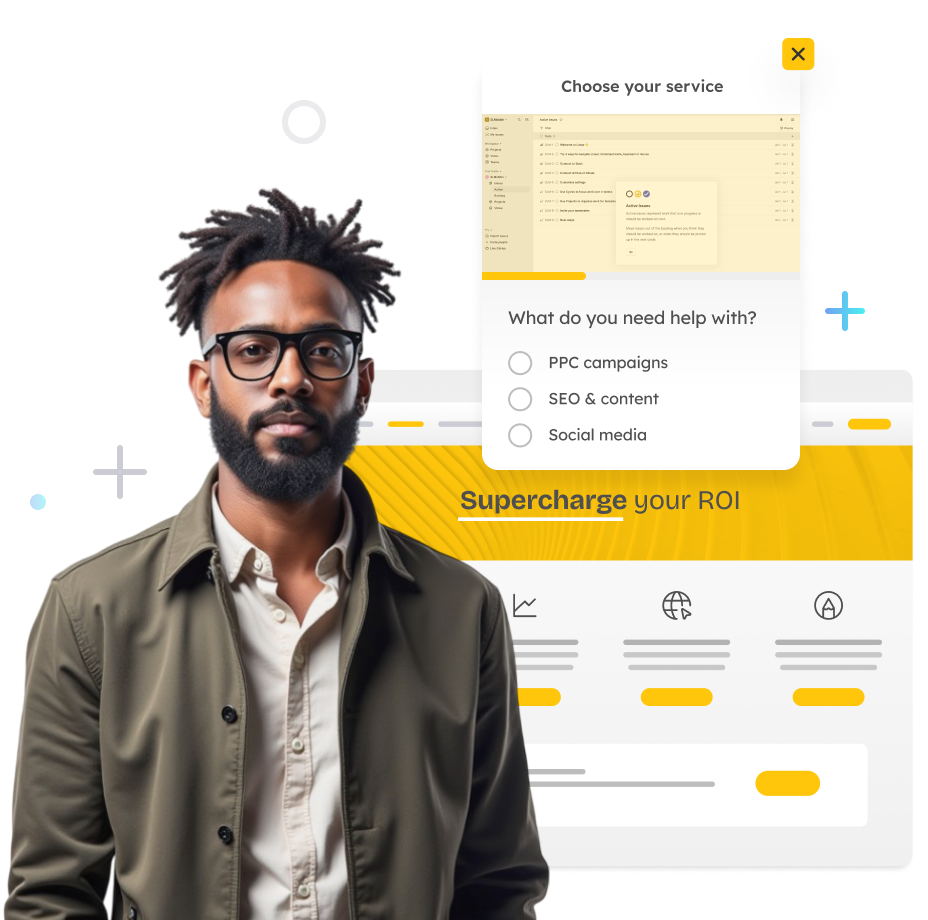
Pathmonk: the personalization tool your agency actually needs
Pathmonk was built to deliver everything traditional personalization tools promise, without the complexity, the dev cycles, or the slow time to value. It’s personalization that actually works for agencies: fast to set up, easy to manage, and scalable across all your clients.
Let’s break it down.
How Pathmonk works
At its core, Pathmonk is an AI-powered personalization engine that doesn’t require any changes to your client’s website. Instead of swapping out elements on the page, Pathmonk overlays targeted microexperiences—discreet, interactive pop-ins that appear from the side of the screen based on the visitor’s behavior.
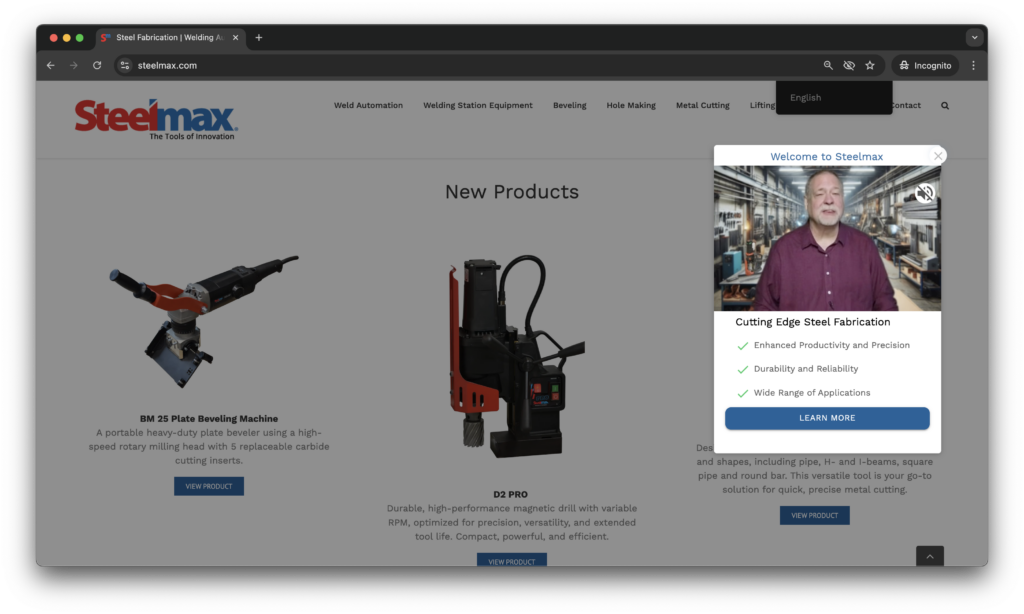
These microexperiences are always aligned with a single conversion goal—defined by the agency or client (e.g., “book a demo”, “purchase now”, “sign up for the free trial”). But the format they take depends on who’s visiting and what they’re doing.
That means one visitor might see:
- A short testimonial from a relevant customer
- A product video that builds trust
- A 3-question qualifier to segment interest
- A reminder to book a call with a one-click CTA
Someone else on the same page might see a completely different microexperience, depending on where they came from, what they’ve already seen, and how they’re behaving on the site.
Pathmonk uses real-time behavioral data—like scroll depth, time on page, navigation flow, traffic source, and even visitor frequency—to decide what to show and when. There’s no guesswork, and no manual segmentation. It’s plug-and-play intent detection that knows how to move buyers forward.
What types of customers is Pathmonk ideal for?
Agencies can roll out Pathmonk across nearly any client, but it shines especially in:
- B2B SaaS companies with long, multi-step buying journeys where decision-makers need nurturing and trust-building before conversion
- Service-based businesses (agencies, consultancies, local services) where lead gen is critical but the site isn’t persuasive enough on its own
- Niche industries with low-to-moderate traffic but high-intent visitors—where making every visit count is the only way to scale
- Clients with outdated, static, or hard-to-update websites where dev resources are limited or internal buy-in for changes is nonexistent
- E-commerce businesses that want to boost conversions, reduce bounce, and personalize experiences without custom dev work—using pop-in microexperiences like testimonials, trust badges, discount reminders, or cart nudges
- Companies spending on paid traffic but seeing poor ROI from landing pages or site engagement—Pathmonk helps close the gap between click and conversion
Whether it’s booking a demo, filling out a form, or completing a purchase, Pathmonk helps drive the user toward that next step, without friction.
Why marketing agencies love using Pathmonk
Pathmonk isn’t just a platform. It’s a pitch. It’s a retention tool. It’s a revenue stream.
Here’s why it fits into a marketing agency model perfectly:
✅ You deliver results faster
Personalization starts working as soon as it’s installed. Agencies regularly report seeing uplifts in demo bookings and form fills within a few days, not weeks. That means you can show momentum in your next client meeting without touching their site design or dev resources.
✅ You become less dependent on internal bottlenecks
No more asking, waiting, following up, and escalating dev requests. You stay in control of the optimization layer, and you move at your own pace.
✅ You add new revenue streams
Agencies monetize Pathmonk in multiple ways:
- Setup fee for implementation
- Monthly retainers to manage optimization
- Performance-based bonuses for uplift in conversions
You can even include Pathmonk as part of a higher-tier retainer package focused on results-based CRO or funnel management.
✅ You retain clients longer
With built-in funnel analytics, clear attribution, and side-by-side before/after performance, Pathmonk helps you prove your impact in black and white. No fluff. No vanity metrics. Just improved conversion rates.

✅ You stand out in every pitch
Let’s be honest, most agencies still sell the same stack: ads, SEO, content, maybe some CRO. Personalization gives you a new edge. You walk in and say, “We’ll make your website smarter tomorrow.” And that’s hard to say no to.
✅ You manage everything from one place
Pathmonk’s dashboard is designed to help agencies scale. You can:
- Manage multiple clients in one place
- Track experiences per segment, source, or funnel stage
- Monitor performance and show uplift in clear, client-friendly dashboards
Whether you’re handling 3 clients or 30, Pathmonk keeps it organized and scalable.
Implementation is ridiculously fast
Setup takes less than 10 minutes. Seriously.
All it takes is:
- Adding one line of code via GTM or script
- Setting your primary conversion goals (like demos booked, contact forms submitted, downloads)
- Choosing your AI model to focus on lead generation, sales growth, or engagement
- Letting Pathmonk run—it begins personalizing instantly, based on real user behavior
There’s no tagging, no segment-building, no weeks of “setup” before anything happens. Agencies can get their clients live in a day, and start seeing data roll in immediately.
💡 In short:
Pathmonk turns any website—no matter how outdated, clunky, or limited—into a conversion-optimized experience that adapts in real time. No devs. No delays. No excuses.
If you’re a marketing agency looking to improve client performance, increase revenue, and stand out in a crowded market, Pathmonk is your best-kept secret.

